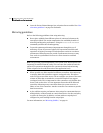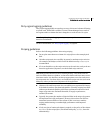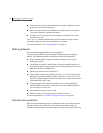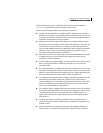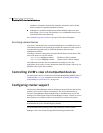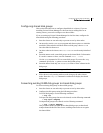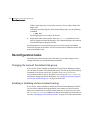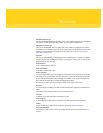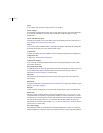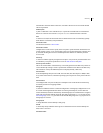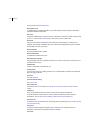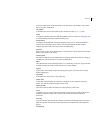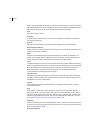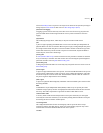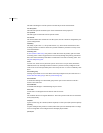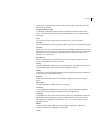
522 Glossary
cluster
A set of hosts (each termed a node) that share a set of disks.
cluster manager
An externally-provided daemon that runs on each node in a cluster. The cluster managers
on each node communicate with each other and inform VxVM of changes in cluster
membership.
cluster-shareable disk group
A disk group in which access to the disks is shared by multiple hosts (also referred to as a
shared disk group). Also see private disk group.
column
A set of one or more subdisks within a striped plex. Striping is achieved by allocating data
alternately and evenly across the columns within a plex.
concatenation
A layout style characterized by subdisks that are arranged sequentially and contiguously.
configuration copy
A single copy of a configuration database.
configuration database
A set of records containing detailed information on existing VxVM objects (such as disk
and volume attributes).
data change object (DCO)
A VxVM object that is used to manage information about the FastResync maps in the DCO
volume. Both a DCO object and a DCO volume must be associated with a volume to
implement Persistent FastResync on that volume.
data stripe
This represents the usable data portion of a stripe and is equal to the stripe minus the
parity region.
DCO volume
A special volume that is used to hold Persistent FastResync change maps, and dirty region
logs (see dirty region logging).
detached
A state in which a VxVM object is associated with another object, but not enabled for use.
device name
The device name or address used to access a physical disk, such as c0t0d0. The c#t#d#
syntax identifies the controller, target address, and disk. In a SAN environment, it is more
convenient to use enclosure-based naming, which forms the device name by concatenating
the name of the enclosure (such as enc0) with the disk’s number within the enclosure,
separated by an underscore (for example, enc0_2). The term disk access name can also be
used to refer to a device name.
dirty region logging
The method by which the VxVM monitors and logs modifications to a plex as a bitmap of
changed regions. For a volumes with a new-style DCO volume, the dirty region log (DRL) is



